We may receive a commission when you use our affiliate links. However, this does not impact our recommendations.
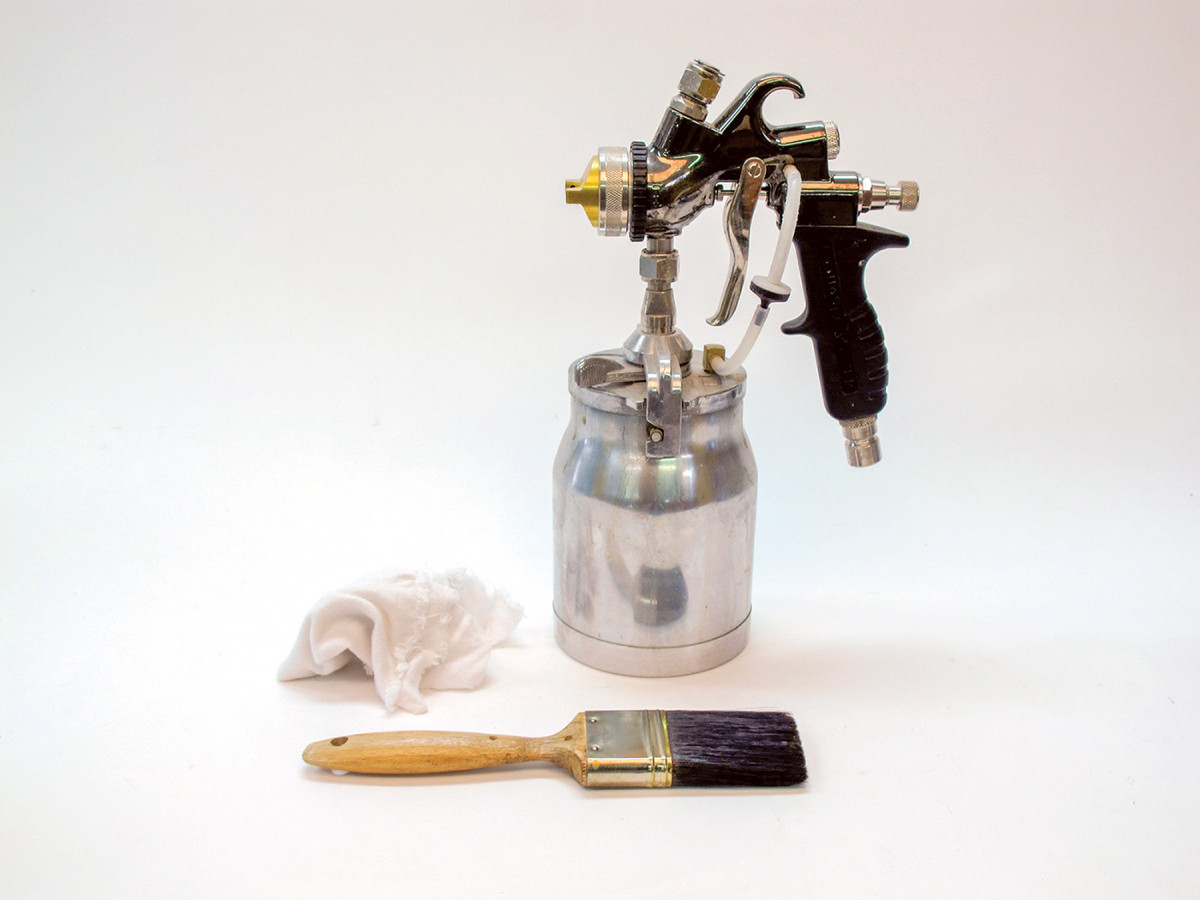
There are only three tools used to apply finishes: a rag, a brush and a spray gun. Think of the almost countless number of hand- and machine-powered tools you use to do quality woodworking and the simplicity of finishing should be evident from this photo.
The tools are the most straightforward part of finishing to understand.
Compared to woodworking, finishing is a very simple craft. The objective is no more complicated than transferring a liquid stain or finish from a can or other container to the wood. There are only three tools used to do this: a rag, a brush and a spray gun. (I’m including rollers, paint pads, etc., in the same category with brushes.) Each is easy to use. Even a spray gun is no more complicated than a router.
Because many woodworkers struggle with finishing, despite what I’m saying in this article, I need to include this caveat: Choosing which stain or finish to use and how to use it can be confusing. This is largely due to bad manufacturer labeling, but there’s
no problem understanding the tools.
There are five key differences among the three tools: cost, speed of transfer, degree of producing a level film, relative amount of waste produced and weather problems
with a spray gun.
Cost
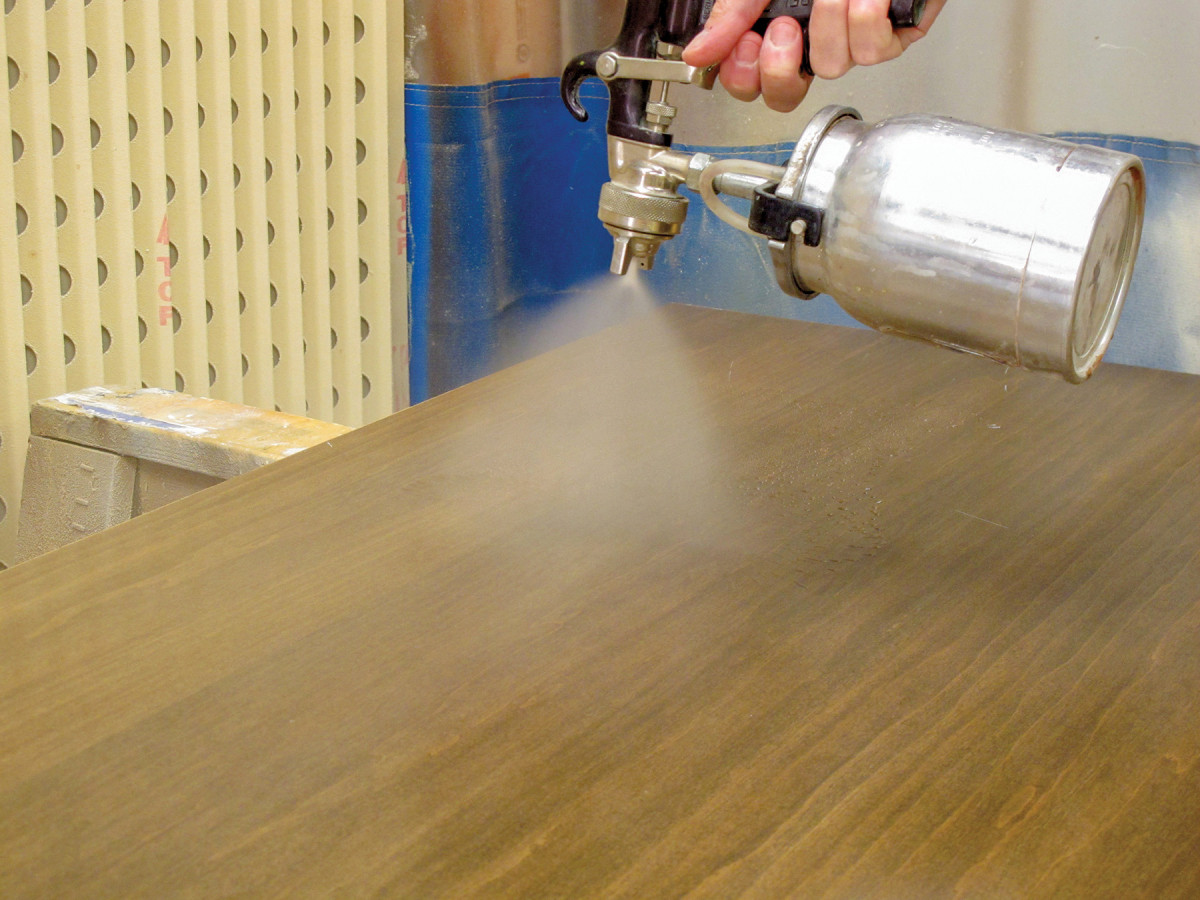
1. The fastest way to achieve a level finish is by spraying. The downsides to spraying, besides initial expense, are increased waste (compared to brushing or wiping) and the extra expense in cold weather arranging exhaust and warm-air replacement.
Rags cost little to nothing, especially if you make an effort to save old worn-out cotton clothing. In addition, inexpensive paper towels can often be substituted for small jobs. Brushes are also inexpensive, though they cost more than rags. In contrast, even the cheapest spray guns, combined with a source of high-volume or high-pressure air, cost $200 or more. So, if cost is a factor, you may be limited to using rags and brushes.
The exception is with small objects where you may be able to use aerosols. These are widely available in almost every finish.
Speed
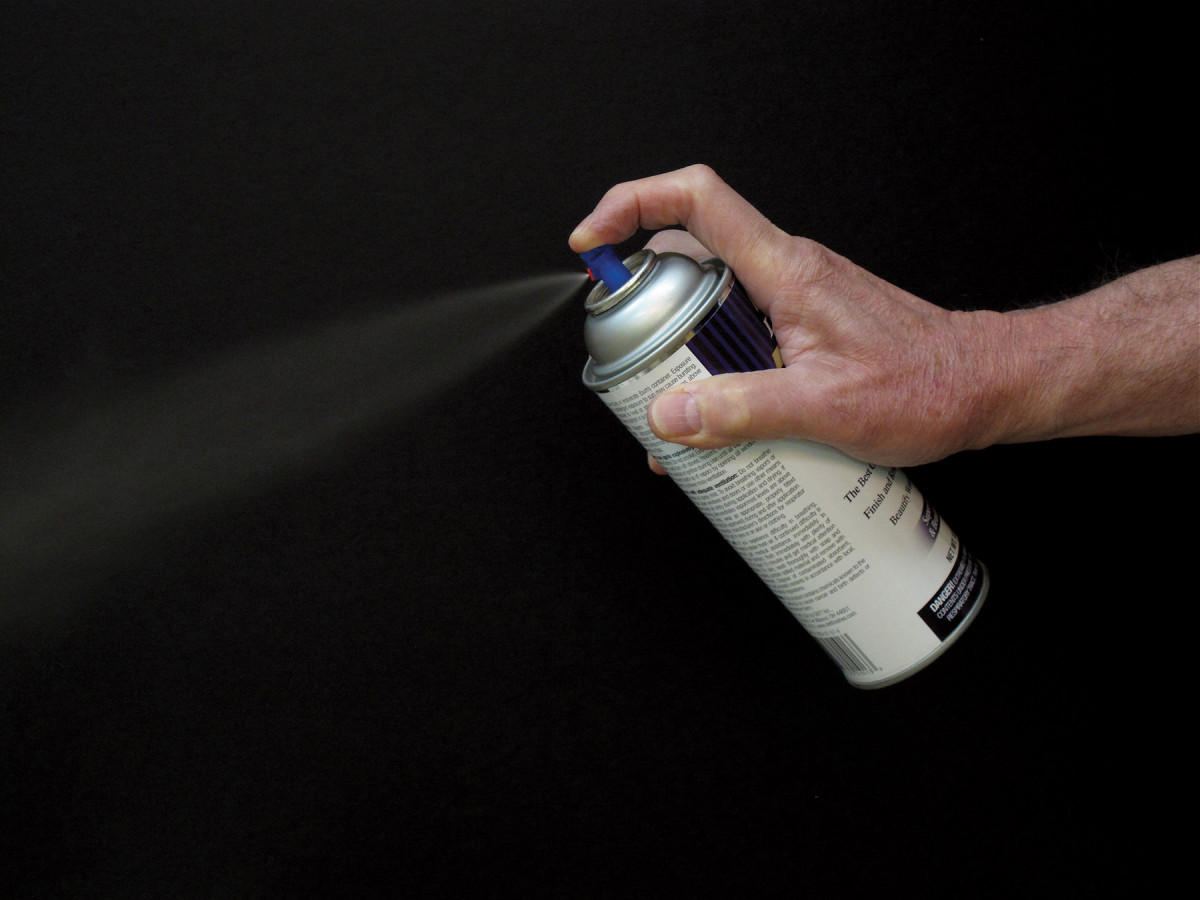
2. For smaller objects you can substitute aerosols for spray guns and achieve all the same advantages.
You can apply a stain or finish to a large area faster with a rag or spray gun than you can with a brush. Rags are very effective when you intend to wipe off all the excess, as you usually do with stains and oil finishes. Spray guns are effective for applying any stain or finish and either wiping off the excess or leaving a finish to build a film.
In comparison, brushes are inefficient tools, because they can carry only a small amount of the liquid stain or finish at a time. You have to constantly dip the brush back into the liquid to reload it.
Film Leveling
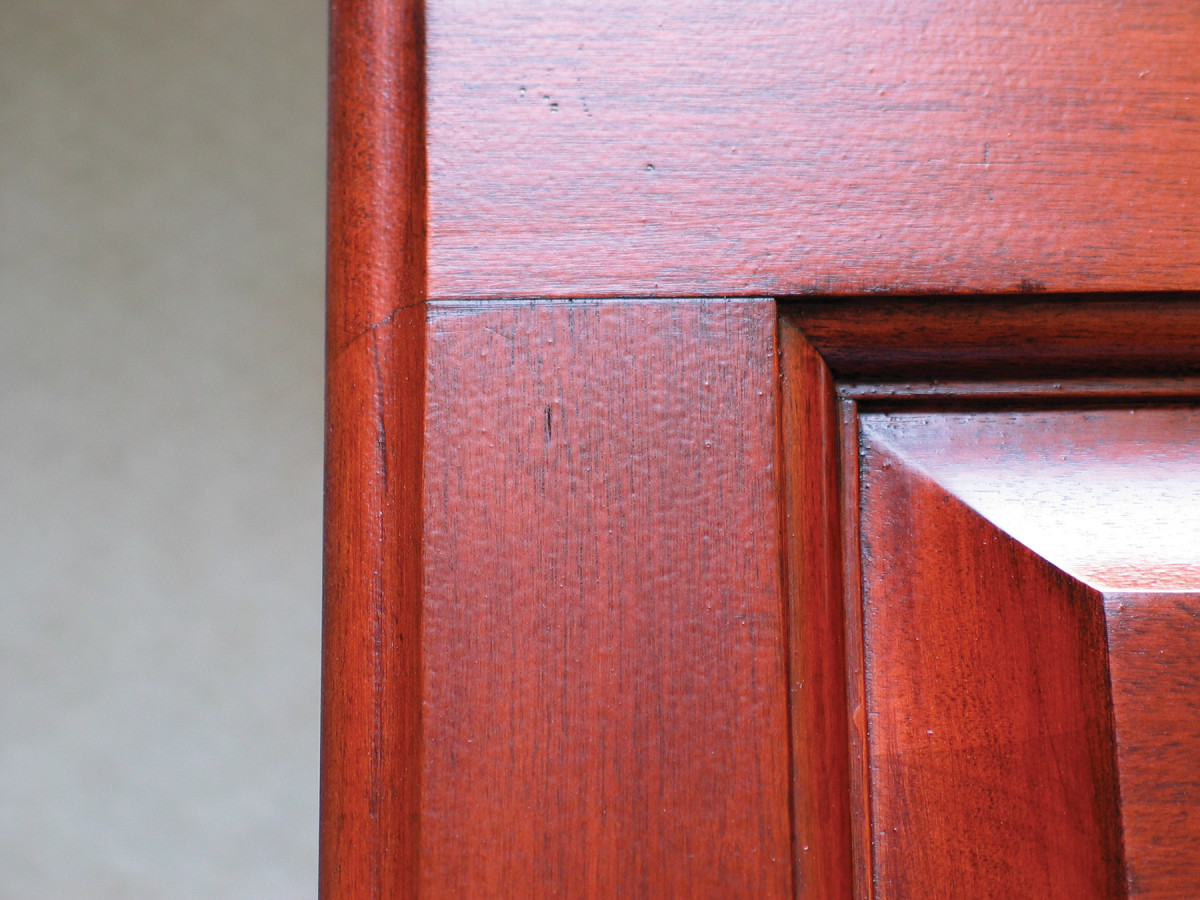
3. A major flaw that can come with spraying is orange peel. This is an unlevel surface that resembles the peel of an orange. To make a perfect finish, this flaw has to be sanded level.
In cases where you aren’t wiping off the excess, finish leveling is very important. You can always sand the finish to remove flaws, such as brush marks and orange peel, and make it level. But this requires extra work, and it always carries with it the risk of cutting through and causing damage that’s difficult to repair. The goal in applying any finish is to get it as level as possible from the start. The three tools differ in their ability to produce a level film.
It’s nearly impossible to apply a film-building finish with a rag without leaving deep ridges in the film. (The exception is when you use the technique of French polishing, which can only be done with shellac.) Brushes perform better, but they leave brush marks. This is true even with sponge brushes, which leave ridges at the edges of each brush stroke, and with expensive bristle brushes. Spray guns produce the most level surface of the three tools. But even spray guns leave a light pimply texture called “orange peel.”
So, it’s virtually impossible to apply a perfect finish using any tool unless you wipe off all the excess after each coat. All three tools leave flaws in the finish film. To make a finish perfect, you have to level it using sandpaper, then rub it to the sheen you want using steel wool or rubbing compounds. It usually requires considerably less work to sand a finish level that’s been applied with a spray gun than one that’s been applied with a brush.
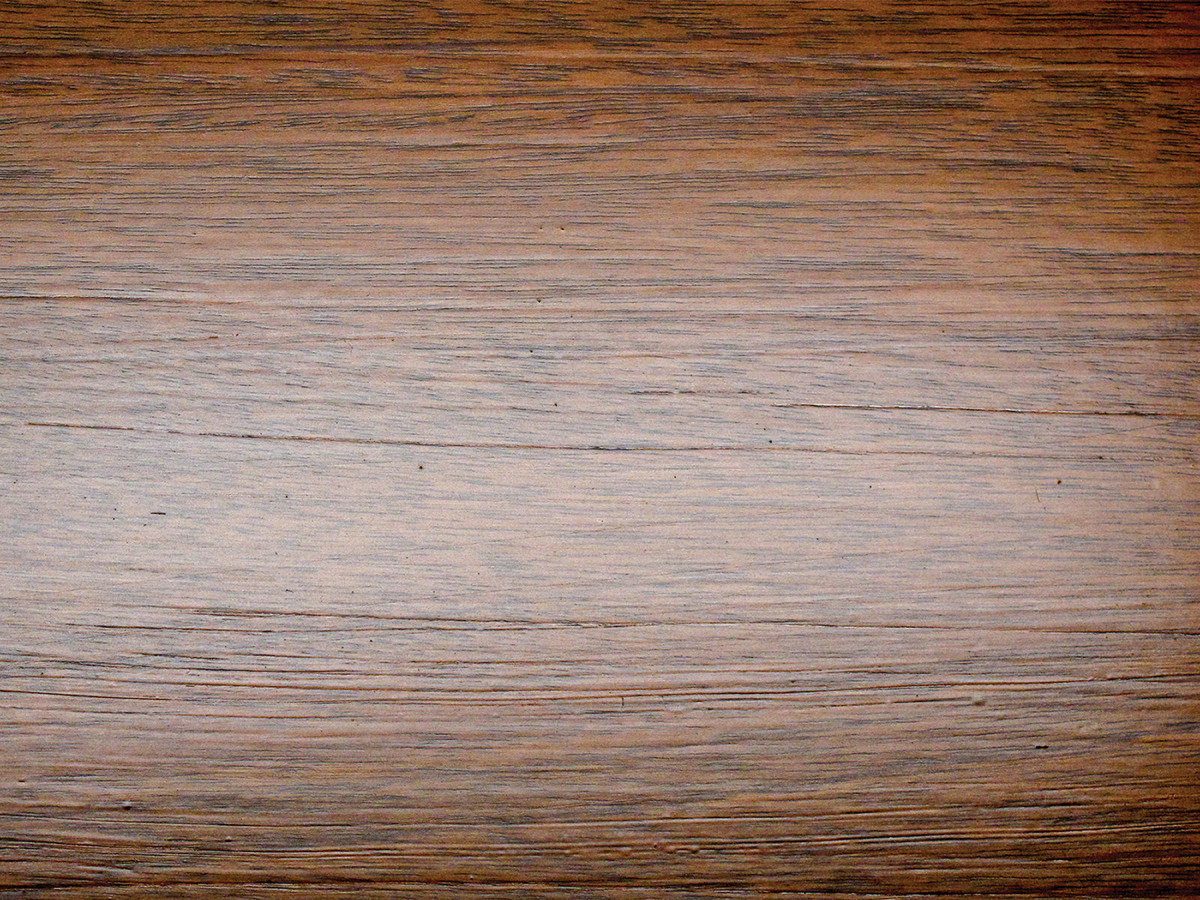
4. A major flaw that comes with brushing a finish is brush marks. Contrary to what’s often said, you can’t totally avoid these marks by using a more expensive brush. There’ll still be brush marks that have to be sanded level to achieve a perfect finish.
Waste
Waste is undesirable because of cost and the amount of pollution it creates. Waste costs more, not only because of the unused finish material, most of which winds up in the atmosphere, on the floor, or on spray-booth filters, but also because of the cost of disposing of used solvents and filters.
Rags and brushes are almost 100 percent efficient. By comparison, spray guns are very inefficient. A large part of the finish material is lost in overspray and bounce-back. HVLP spray guns are more efficient than the old conventional spray guns, and HVLP guns dominate the market because of this.
Weather
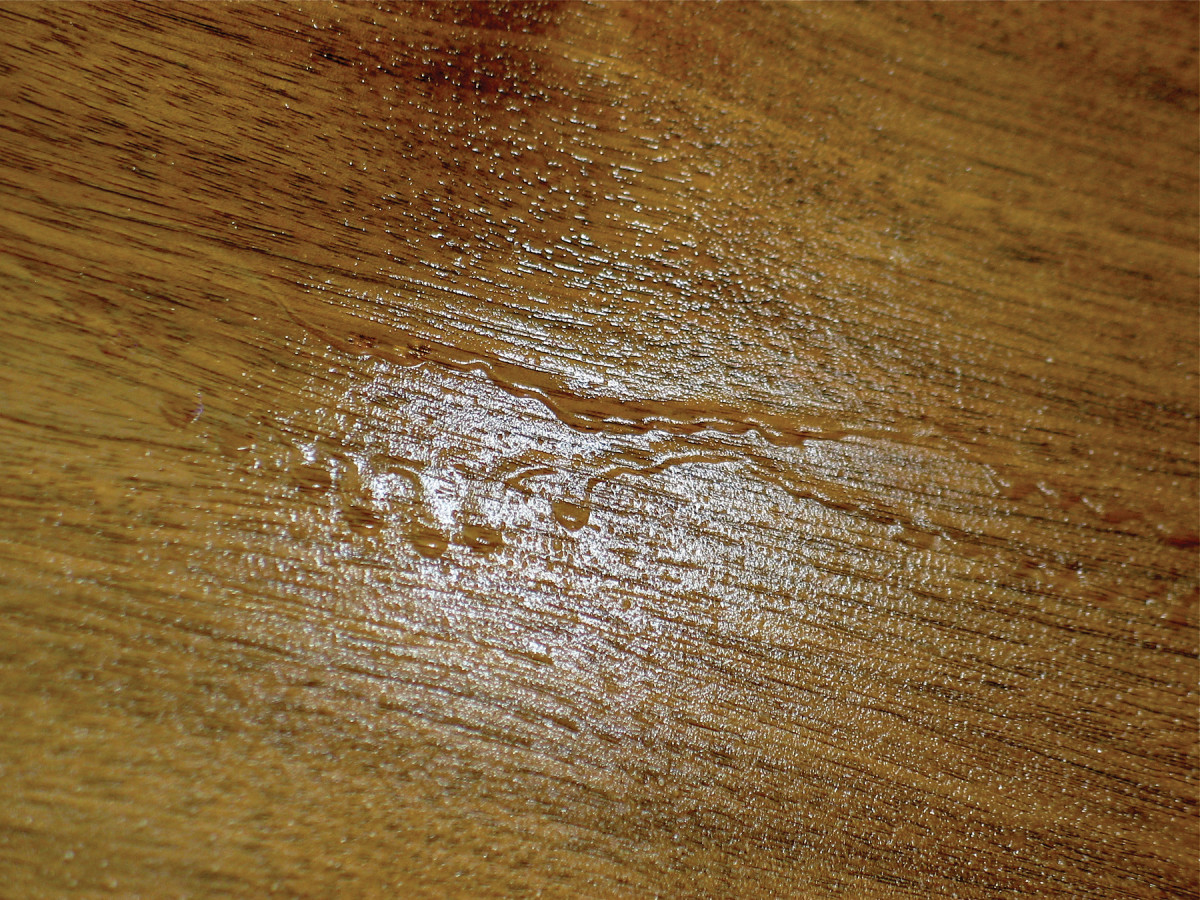
5. Though you can get runs and sags with any of these three tools, the problems are most common when brushing.
If you live in a cold climate and can’t finish outdoors for a large part of the year then you’ll have problems using a spray gun. Spray guns create a lot of overspray that floats around the room and lands on everything, including your work. You must exhaust this overspray, and this presents two problems: replacing the exhausted air with warm air, and trapping the overspray before it gets to the fan and builds up on it. In contrast, rags and brushes transfer all the liquid efficiently from the can to the wood. The only leftover is evaporating solvent as the coating dries.
Replacing air with warm air on cold days can be a strain on your heating system. Placing a heater in the room where you’re spraying can be a hazard, especially if there’s an open flame in the heater. Never spray in a room where there’s an open flame as it can cause an explosion.
To trap overspray, arrange a bank of filters between you and the exhaust fan. Don’t allow finish or paint to build up on the fan. In addition, don’t allow solvents from a solvent-based paint or finish to be drawn across a motor that’s not explosion-proof.
Though spray guns are easy to use and they produce good results, few hobbyists rely on them because of these problems. The most common tools used by hobbyists are rags and brushes.
Here are some supplies and tools we find essential in our everyday work around the shop. We may receive a commission from sales referred by our links; however, we have carefully selected these products for their usefulness and quality.









